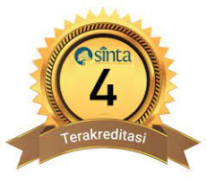Analysis of Junior High School Students' Self-Efficacy towards Science A Case Study
Abstract
In PISA 2025, formulated by the OECD in 2023, the science competence expected of students is to be able to recognize, construct, apply, and evaluate a phenomenon scientifically and use the scientific information in decision-making and subsequent actions. Many studies have revealed a decline in the level of interest in science. One of the causes of this is the lack of science self-efficacy. This study aims to analyze the self-efficacy of junior high school students toward science learning. The instrument used in this study is a questionnaire called the science self-efficacy Scale (SSES), which consists of four aspects: identification and recall, explaining and applying, questioning and debating, innovative design, and two open-ended questions. The participants of this study totalled 331 students, consisting of 200 females and 131 males. The data collected were analyzed with descriptive statistics. The results showed that the average self-efficacy of IPA was 3.14, which was included in the moderate category. The results of the average score of each aspect are in the aspect of identifying and remembering 3.29, in the aspect of explaining and applying 3.09, in the aspect of asking and arguing 3.08, and in the aspect of innovative design 3.04. Open-ended questions reveal that internal factors of learners and external factors of teachers and the learning environment influence self-efficacy in science. Therefore, the Kruskal-Wallis test results show that the Asymp.Sig. value is 0.002-0.037, so there is a significant difference in self-efficacy in science between grades 7, 8, and 9.
Full Text:
PDFDOI: http://dx.doi.org/10.24036/16991171074








